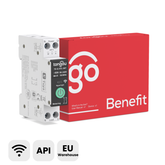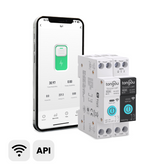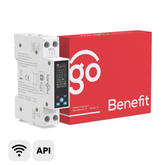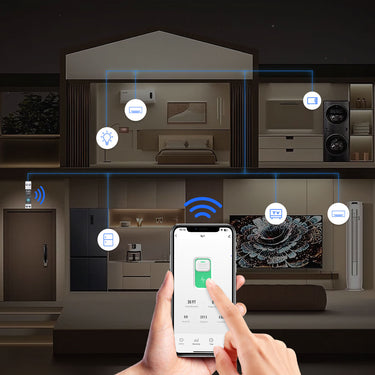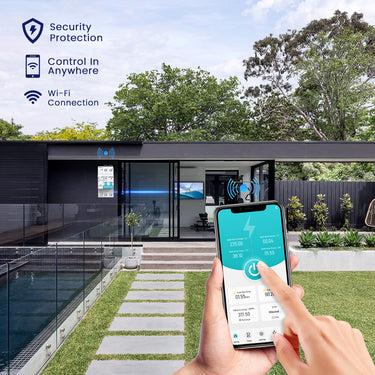Zigbee vs. Z-Wave: Which Smart Home Protocol is Right for You?
When diving into the world of smart home technology, you'll quickly encounter terms like Zigbee and Z-Wave. These are the two most popular wireless communication protocols that allow your smart devices to talk to each other. Choosing between them can feel daunting, but understanding their core differences is key to building a robust and reliable smart home system.
At Tongou Smart Store, we believe in empowering you with knowledge to make the best decisions for your connected living space. Let's break down Zigbee and Z-Wave to help you decide which protocol aligns best with your smart home aspirations.
Understanding Smart Home Protocols
Before we compare, let's clarify what a "protocol" means in this context. Think of it as a language. For two people to communicate, they need to speak the same language. Similarly, for your smart light bulb to understand your smart switch, they need to communicate using the same wireless "language" or protocol.
Both Zigbee and Z-Wave create a mesh network. This is a highly resilient network where each device (or "node") can send and receive data, and also relay data from other devices. This extends the range and reliability of your network, as signals can hop from one device to another until they reach their destination. If one device fails, the network can often find an alternative path.
Now, let's get into the specifics of each.

What is Zigbee?
Zigbee is an open-source wireless technology standard designed for low-power, low-data-rate applications, making it perfect for smart home devices. It operates on the 2.4 GHz frequency, which is the same frequency used by Wi-Fi and Bluetooth.
Key characteristics of Zigbee:
-
Open Standard: This means many manufacturers can develop Zigbee-compatible devices, leading to a vast ecosystem.
-
Global Frequency: Operating on 2.4 GHz makes it universally available but also susceptible to interference from Wi-Fi and Bluetooth devices.
-
High Data Rate: While "low-data-rate" compared to Wi-Fi, it's sufficient for device commands and sensor readings.
-
Large Device Capacity: A single Zigbee network can support thousands of devices, though typical home networks will be much smaller.
-
Energy Efficient: Devices are designed to consume very little power, extending battery life for sensors and other battery-operated gadgets.
What is Z-Wave?
Z-Wave is a proprietary wireless communication protocol primarily developed for home automation applications. Unlike Zigbee, Z-Wave operates on different frequencies in various regions (e.g., 908.42 MHz in the US, 868.42 MHz in Europe). This lower frequency is a significant differentiator.
Key characteristics of Z-Wave:
-
Proprietary Standard: While technically proprietary, Z-Wave devices undergo a certification process to ensure interoperability. This leads to high reliability but a slightly smaller (though still very extensive) ecosystem compared to Zigbee.
-
Regional Frequencies: Operating on sub-1 GHz frequencies means less interference from common household devices like Wi-Fi routers and microwaves. This often translates to a cleaner, more reliable signal.
-
Longer Range: The lower frequency allows Z-Wave signals to travel further and penetrate walls more effectively than 2.4 GHz signals.
-
Lower Data Rate: Generally lower than Zigbee, but still perfectly adequate for smart home commands.
-
Excellent Interoperability: Due to strict certification, almost all Z-Wave devices are guaranteed to work together, regardless of manufacturer.
Popular devices that use Z-Wave: Ring Alarm, Aeotec, Fibaro, many smart locks, thermostats, and garage door openers.
Zigbee vs. Z-Wave: A Side-by-Side Comparison
To make your decision easier, here's a detailed comparison of these two robust protocols:
|
Feature |
Zigbee |
Z-Wave |
|
Frequency |
2.4 GHz (global) |
Sub-1 GHz (e.g., 908.42 MHz US, 868.42 MHz EU – regional) |
|
Interference |
More susceptible to interference from Wi-Fi, Bluetooth, microwaves |
Less susceptible to interference, clearer signal |
|
Range |
Good, but shorter than Z-Wave due to higher frequency |
Excellent, longer range, better wall penetration |
|
Mesh Network |
Yes, extends range and reliability |
Yes, extends range and reliability |
|
Speed/Bandwidth |
Higher data rate, suitable for faster responses/more data |
Lower data rate, but still instant for typical smart home commands |
|
Power Consumption |
Very low, ideal for battery-powered sensors |
Very low, ideal for battery-powered sensors |
|
Ecosystem Size |
Very large and diverse (open standard) |
Large and growing (proprietary with strict certification) |
|
Interoperability |
Generally good, but can sometimes have quirks between manufacturers |
Excellent, guaranteed interoperability due to strict certification |
|
Security |
Uses AES-128 encryption |
Uses AES-128 encryption |
|
Ideal For |
Large networks, lighting, diverse ecosystems, open-source enthusiasts |
Reliability, longer range, fewer interference issues, seamless integration |
Which One Should You Choose?
The "better" protocol largely depends on your specific needs, existing devices, and future smart home goals.
Choose Zigbee if:
-
You already have Zigbee devices: Many popular brands like Philips Hue or IKEA TRÅDFRI use Zigbee. If you're building upon an existing ecosystem, sticking with it makes sense.
-
You prioritize a vast ecosystem and lower cost: The open standard often leads to a wider variety of devices and potentially more competitive pricing.
-
You're comfortable with potential Wi-Fi interference management: While usually not a major issue, it's something to be aware of.
| Tongou Zigbee Smart Switch | Zigbee Smart Circuit Breaker | Zigbee Smart Control Panel |
 |
 |
 |
Choose Z-Wave if:
-
You prioritize rock-solid reliability and minimal interference: The sub-1 GHz frequency is a major advantage here, especially in crowded wireless environments.
-
You need longer range and better signal penetration: This is ideal for larger homes or homes with thick walls.
-
You value guaranteed interoperability: The Z-Wave Alliance's certification process ensures that devices from different manufacturers will work seamlessly together.
-
You're looking for strong security focus: Many Z-Wave devices, especially smart locks, are designed with security in mind.
Understanding Zigbee and Z-Wave is a crucial step towards building the smart home of your dreams. Whether you lean towards the expansive ecosystem of Zigbee or the robust reliability of Z-Wave, [Your Shopify Store Name] offers a curated selection of high-quality smart home products from leading brands.


